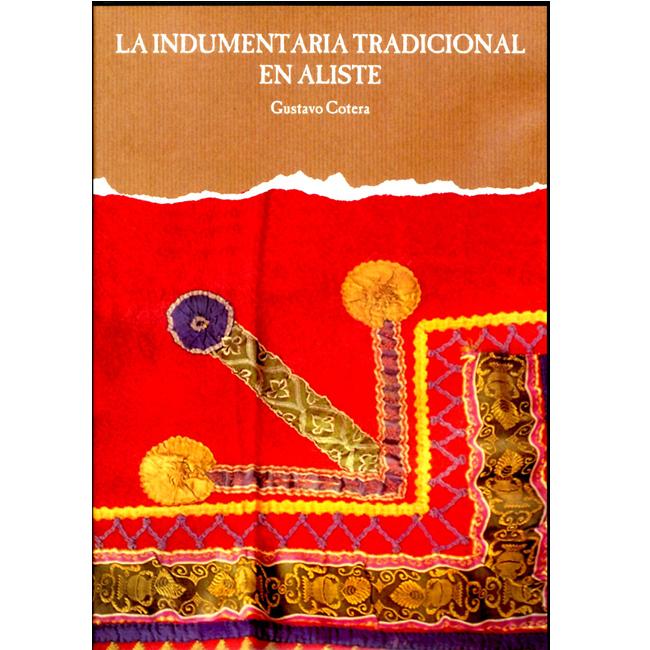The traditional dress of Aliste, from the trunk to the walkway
The craft weaving workshops in La Raya were initially supported by the Interreg programme through projects "Teribe" (2005) and "Límite Norte" (2007). Starting in 2015, "Norcyl Plus" and "Norcyl 2020" are launching new workshops such as Trabazos to learn how to restore old suits taken from trunks and how to make new garments.
Unfortunately, the pandemic has dry-slowed more than thirty years of uninterrupted activity, but vaccines are expected to reopen no later than September, by 2021-2022.
Details embroidered in the fists of a suit. _ Ch. S.
The crafts of textiles according to Espacio Frontera "are the art that with threads and patience produces fabrics of dream, linen, wool, silk, velvet and cotton. Matter joins the weaving trades, chokes in the tapestries, is formed thanks to small stitches".
The traditional dress workshops of Aliste and Tras os Montes in Trabazos have been organized by the Junta de Castilla y León and the Interreg programme, an activity aimed at Spanish and Portuguese interested in the recovery of traditional pieces of the Raya. Thanks to them, the students learn how to recover old clothes and how to make new pieces, from old party suits and chores.
Students learn how to make from brown layers to hand-chopped tablecloths in cloths and wool, men's and women's shirts in natural linens with popular handmade embroidery, panties in brown and black stamens, triangular flap vests and beak, square or pertezuela cleavage, of cheerful color, whose laces represent the ascent and the braids and laces that form the net are sacred symbols, all of them reproductions from the 18th century. To this are added monteras, bags, dresses, skirts, coats, chopping strips to frame felt and other garments and accessories supervised in the formation and invoiced by an artisan teacher.

Aliste's typical man suit. _ Ch. S.
The Junta de Castilla y León and Interreg have also planned workshops for the interpretation and construction of instruments in Trabazos in order to promote the cultural heritage of Castile and Leon and Interreg in order to make known the musical genres, their rhythms and the sagas of traditional musicians who have bequeathed their cultural heritage in La Raya Hispanolusa. Added to them are the workshops for the construction of traditional musical instruments used in the school of folklore of Alise and Tras os Montes folklore, such as dulzaina, fole gaita, three-hole pastoral flute and drum, square Baker, drum, zambomba, tambourine, castanets and other small percussions such as arrabel, carajilo (nuez) or Reque-Reque.
How to become an improved version of yourself # LollyDaskal https: / / t.co / lmGaUmBoN9 # LeadFromWitin # leadership # Management # HR # success
— Lolly Daskal Mon May 24 20:45:03 +0000 2021
Coinciding with the European days of Crafts 2021 "Space Frontera" has released the audiovisual documentary "Recuperando El folklore striano" in which it collects the promotion and impulse of the Junta de Castilla y León and of the Interreg program to the cultural heritage of the Raya of Spain and Portugal with Trabazos and Aulas de Música de Aliste and Tras os Montes as protagonist, and which is defined as "an entity transmitting knowledge with teachers and apprentices arriving from both sides of the border
Miguel Bermúdez Bermúdez, its President, points out that "in the seventies and eighties of the last century folklore and traditional culture were practically lost, we got together and so was born Aulas de Música de Aliste y Tras os Montes that fulfilled its objectives of recovering folklore and transmitting knowledge to the new generations so that we might be lost."
Enlistment girls and boys pose in traditional clothing. _ Ch. S.
For the Transmontane Rui Magalhaes: "in Tras os Montes we have many traditions similar to Aliste and thanks to this school we will learn to recover them as is the case with clothing, the making of instruments and we learn to be able to touch them".
For Rodrigo García, "the most typical instrument is gaita, we have a clear Galician and Portuguese influence. The one who sets the rhythm that can't be missed at any dance is the drum. There were big tambourines in Aliste. We have to learn to translate what the elders have taught us by being as faithful as possible. "
Espacio Frontera states that "the enlistment woman always had a reputation as a worker and in addition to the tasks of the field, the house and the family there was still energy to sew, embroidery and sing. These enlisted women have been able to preserve with mime both the costumes of their great-grandmothers and the songs and dances that bequeathed them and have a very important role as teachers, harmonizers and intergenerational and transmitters of pride of belonging. "
"they are very ancestral but very beautiful costumes, and we are very proud of our clothes and at the Trabazos workshop we have already made our suit," says Elena Gago. "it seems he doesn't have a job but still to get an entire suit you're two or three years sewing," says a young girl from Alcañices wearing the suit made by her mother, a student at the workshop.









